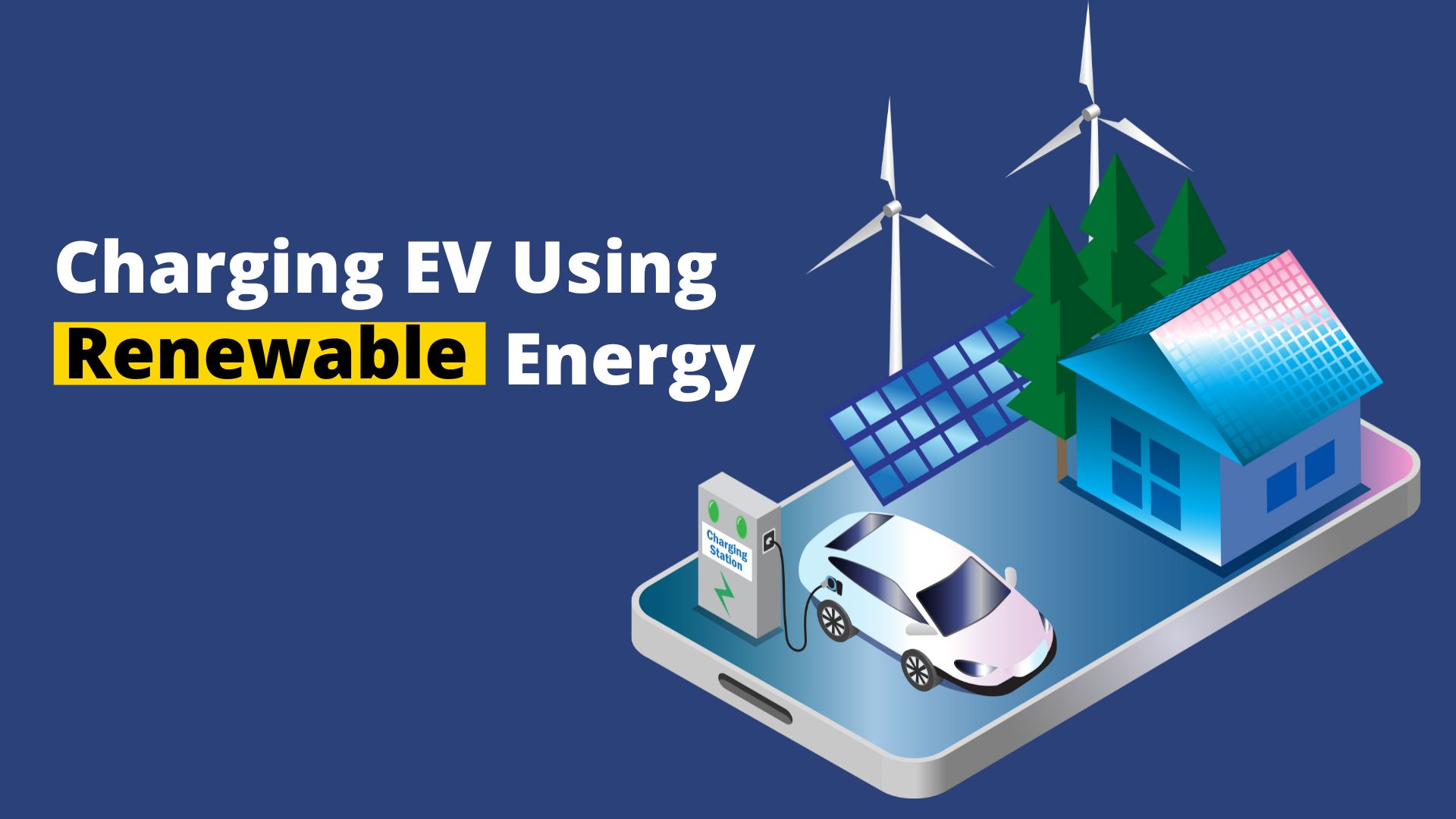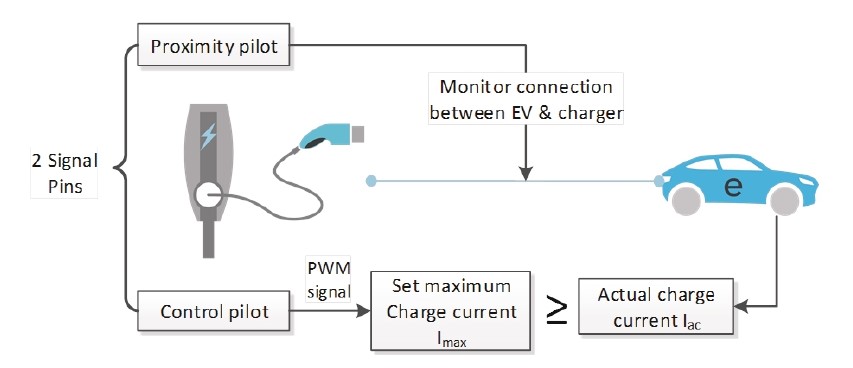 The main reason for moving toward electric vehicles is that they have no tailpipe emissions and are more efficient than combustion engine cars. However, we also know that electric vehicles are sustainable only if the electricity used to charge them comes from renewable sources of energy and not fossil fuels.
The main reason for moving toward electric vehicles is that they have no tailpipe emissions and are more efficient than combustion engine cars. However, we also know that electric vehicles are sustainable only if the electricity used to charge them comes from renewable sources of energy and not fossil fuels.
Topics to be covered in this article are:
- Why do we need to charge electric vehicles from renewable sources of energy?
- What power converters are needed for charging electric cars from PV and wind?
- How can we implement smart charging of EVs from renewable energy?
Electricity Production Today
The main driver for moving to electric vehicles is because they have no tailpipe emissions and they are more efficient than combustion engine cars however the electric vehicles are only sustainable if the electricity used to charge them comes from renewable sources of energy and not from fossil fuels.
Table of Contents
Why do we need Renewable Sources of Electricity to charge Electric Vehicles?

In this graph, we can see the equivalent carbon dioxide emissions from a lifecycle assessment which includes the emissions due to
- Vehicle production
- The well-to-wheel emissions for the fuel (Well to tank, WTT, and tank to the wheel, TTW)
- Vehicle maintenance and,
- End-of-life recycling of the vehicle
The graph has three parts:
- The emissions for different combustion engine cars are shown on the right side
- The middle part shows the emissions for battery-electric cars charged from different emitting electricity generation sources
- The left part shows the emissions for battery-electric cars charged from different non-emitting (maybe renewable) electricity generation sources
We can see that electric vehicles have very little emissions from a life cycle point of view even when charged from a fossil fuel-dominated electricity grid.
However, if the electricity itself is generated from non-emitting sources such as wind, hydro or nuclear, the net life cycle emissions of the electric vehicle are further reduced, and well tank emissions to zero. Hence it is necessary to use renewable sources of electricity to charge electric cars in the future
Charging Electric Vehicle from Wind and Solar energy
EV Charging from wind energy | EV Charging from solar energy |
| Wind power is typically generated today using onshore or offshore wind farms that are located far away from charging electric vehicles. This means that the power must be carried over a long distance between the supply and the EV load. | The advantage of solar panels is that apart from being installed as a solar farm, they can also be installed on the roofs of buildings. Therefore, solar power can be generated close to where electric vehicles will be charged, thus reducing transmission losses. |
| A wind turbine is typically rated on the order of megawatts whereas an EV charger is normally operating on the order of kilowatts. This reflects the large difference in the power scale and the capacity of a wind turbine to charge several hundred cars. | Rooftop solar PV systems are typically rated in the order of kilowatts which is similar to the power rating of an EV charger. |
| wind generation is ideally suited for charging electric cars at homes at night. Hence wind generations are ideally suited for charging electric cars at home at night. | In contrast to wind generation, solar generation is maximum in the daytime and summer. Hence, solar generation is ideally suited for charging cars at workplaces during the day. |
What power Converters are needed for Charging Electric Cars from PV and wind?
Power Converters for Charging an EV
From the point of view of power conversion, the generators used in wind turbines usually produce variable frequency AC electricity. Two back-to-back AC-to-DC and DC-to-AC power converters used to convert variable frequency AC power to high voltage or medium voltage 50 Hz or 60 Hz AC power for long-distance power transmission are done.
This power is then moved to low voltage AC power, and the EV can then be charged using either AC or DC charging.
The simplest way to realize a solar-powered EV charging station is to use a solar inverter. The DC-to-DC power converter operates the solar panels at maximum PowerPoint.
Then, the DC-AC inverter converts the DC power into 50 Hz or 60 Hz AC power for AC charging of the EV. However, there is a disadvantage to this method. Both photovoltaic panels and EV batteries are direct current or DC in nature. And in this method, DC power is inexplicably converted to AC and back.
Therefore, a more efficient way to charge an EV from a PV is to use an isolated DC-to-DC converter and directly charge an EV from a PV using DC charging as shown in the figure.
There are three power converters, a DC-to-DC converter for the solar panels, a DC-DC isolated converter for the electric car, and a DC-to-AC inverter to connect to the AC grid.
- Using this design, direct DC charging of EVs from PV can be realized.
- Secondly, if there is no electric car, then the system acts as a solar inverter and feeds PV power to the grid.
- Third, if there is no solar power, the system operates as a conventional DC charger and charges the EV from the grid.
- Finally, the charger is bidirectional and capable of vehicle-to-grid. So the EV can not only charge from the grid, it can feed power back to the grid as well.
The unique aspect of combining solar charging and vehicle-to-grid is that the electric car battery can now be used as storage for renewable electricity.
Overcoming Variability in Renewable Energy generation
The main challenge with powering electric cars from renewable energy is the variability in generation.
Using a combination of Solar and Wind

One way to address this difference is to shape the wind and solar installation in such a way that we are guaranteed enough energy even when sunlight and wind are minimal.
The disadvantage is that it can lead to overproduction and wastage of electricity when solar insolation and/or wind speeds are at their maximum. By optimally sizing a PV and wind hybrid system, then the variability in PV generation can be partially balanced by the variability in wind generation resulting in a pure system with minimal wastage of electricity.
In the graph below, we can see a system with different percentages of total renewable generation (40% to 100%), and which percentage of that is wind or solar generation.
It can be seen that energy wastage increases as more renewable energy are used to supply the load due to the mismatch between renewable generation and load demand.
However, when the optimum combination of both wind and solar generation is used, power wastage can be significantly reduced.

How Can We Implement Smart Charging of EVs from Renewable Energy
Smart charging
Another solution to help match renewable generation and EV charging is smart charging. When solar and wind output is high, EV charging power can be increased and vice versa.
This has the dual benefit of making EVs sustainable by using more green energy and reducing stress on the grid due to large-scale renewable energy generation.
Smart Charging on Type 1 and Type 2 AC chargers:
In the case of AC charging, the pulse width modulation signal on the control pilot of Type 1 and Type 2 AC chargers can be continuously controlled to adjust the EV charging current based on solar or wind output.
For Chademo and Combo DC charging, CAN and PLC communication can be used, respectively, to adjust the charging power.

The duty cycle of the pilot signals communicates the maximum current capable of being supplied by the Electric Vehicle Service Equipment (EVSE) to the vehicle, the IMAX.
The vehicle can then draw charging current I ac <= Imax.
The relationship between the PWM duty cycle (in %) and the current Imax is defined by two different equations depending on the specified current range; Equation 1, for 6- to 51-A service: Duty cycle = Imax / 0.6 Equation 2, for 51- to 80-A range: Duty cycle = Imax / 2.5 + 64.
To further demonstrate this relationship, the next table shows some common current ratings.
Common Current Ratings
| AC charging current | The duty cycle of PWM on the control pilot |
| 5 | 8.3% |
| 15 | 25% |
| 30 | 50% |
| 65 | 90% |
| 80 | 96% |







Thanks for the post it is truly an insightful post, thanks for sharing it.
Thanks for sending really an informative text.
Rambling b.s. so typical of greenies and other morons who have no clue how anything actually works. Electric cars only “work” because government steals from the producers to subsidize the tech. They require truly nasty rare earth mining to produce non-recyclable batteries, with limited, short lifespans, and deliver poor lifetime long term economy. If electric car tech had to stand on its own, the extreme origination environmental damaged notwithstanding, they would die a quick death .
Some genuinely fantastic work on behalf of the owner of this site, dead great subject material.
I like this web site because so much useful material on here : D.
Cool that really helps, thank you.
very informative articles or reviews at this time.
thank you for your help
sarvadnya
হাই, আমি আপনার মূল্য জানতে চেয়েছিলাম.
I like the efforts you have put in this, regards for all the great content.
Too much effective PV and Wind energy for EV, but RE intregreded charger is not available in market
All You Need to Know About AI Developments